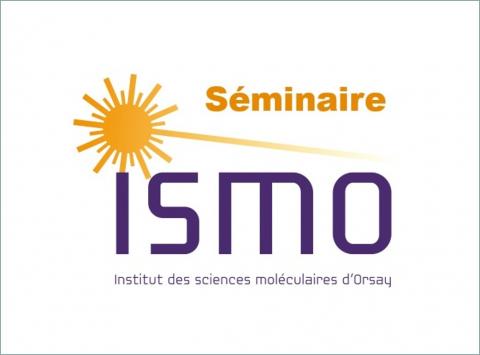
Probing photodynamics in small polyatomic molecules using femtosecond velocity map imaging and ultrafast XUV transient spectroscopy
Probing photodynamics in small polyatomic molecules using femtosecond velocity map imaging and ultrafast XUV transient spectroscopy
par Sonia Marggi-Poullain
Departamento de Química Física, Facultad de Ciencias Químicas, Universidad Complutense de Madrid
Currently available ultrashort laser pulses characterized by femtosecond to attosecond temporal duration has enabled the development of different sensitive tools for real-time observation of photo-induced chemical reactions. Here, two different methodologies, femtosecond velocity map imaging (VMI) and ultrafast extreme ultraviolet (XUV) transient absorption spectroscopy, are employed to unravel the dynamics in small polyatomic iodinated molecules, in particular in the photodissociation of alkyl iodides. In the first case, the dissociation dynamics induced by a UV 200-nm pump pulse, of 180 fs duration, is probed through the detection, by resonance enhanced multiphoton ionization, of iodine fragments produced in a selected quantum state. This allows to obtain detailed information on the energy sharing between the different degrees of freedom of the molecule along with the reaction times. In the second case, the dynamics is induced by one- or two-photon absorption using either few-femtosecond visible pulses, ranging between 500 nm and 900 nm, or 20-fs UV pulses around 260-280 nm, and is then probed by XUV attosecond isolated pulses through iodine-4d core-to-valence transitions. While no information is obtained on energetics, the motion of the wavepacket on the excited states is directly mapped, due to the strong shift of the XUV core-to-valence transitions with internuclear separation and the high sensitivity of the wave packet to the electronic configuration. The results presented will include first structural effects on the predissociation dynamics of alkyl iodides in the second absorption band at 200 nm. Second, coherent nuclear motion in the B excited state of molecular iodine (I2) is visualized with great detail including the wave packet spreading and later recompression, at the outer turning point and inner turning point, respectively. Finally, the photodissociation dynamics of alkyl iodides, following one-photon absorption into the A band, is imaged in real-time and in particular the wave packet bifurcation at the conical intersection is mapped.
http://www.ismo.universite-paris-saclay.fr/spip.php?article2527
Faculté des sciencesProbing photodynamics in small polyatomic molecules using femtosecond velocity map imaging and ultrafast XUV transient spectroscopy
par Sonia Marggi-Poullain
Departamento de Química Física, Facultad de Ciencias Químicas, Universidad Complutense de Madrid
Currently available ultrashort laser pulses characterized by femtosecond to attosecond temporal duration has enabled the development of different sensitive tools for real-time observation of photo-induced chemical reactions. Here, two different methodologies, femtosecond velocity map imaging (VMI) and ultrafast extreme ultraviolet (XUV) transient absorption spectroscopy, are employed to unravel the dynamics in small polyatomic iodinated molecules, in particular in the photodissociation of alkyl iodides. In the first case, the dissociation dynamics induced by a UV 200-nm pump pulse, of 180 fs duration, is probed through the detection, by resonance enhanced multiphoton ionization, of iodine fragments produced in a selected quantum state. This allows to obtain detailed information on the energy sharing between the different degrees of freedom of the molecule along with the reaction times. In the second case, the dynamics is induced by one- or two-photon absorption using either few-femtosecond visible pulses, ranging between 500 nm and 900 nm, or 20-fs UV pulses around 260-280 nm, and is then probed by XUV attosecond isolated pulses through iodine-4d core-to-valence transitions. While no information is obtained on energetics, the motion of the wavepacket on the excited states is directly mapped, due to the strong shift of the XUV core-to-valence transitions with internuclear separation and the high sensitivity of the wave packet to the electronic configuration. The results presented will include first structural effects on the predissociation dynamics of alkyl iodides in the second absorption band at 200 nm. Second, coherent nuclear motion in the B excited state of molecular iodine (I2) is visualized with great detail including the wave packet spreading and later recompression, at the outer turning point and inner turning point, respectively. Finally, the photodissociation dynamics of alkyl iodides, following one-photon absorption into the A band, is imaged in real-time and in particular the wave packet bifurcation at the conical intersection is mapped.
http://www.ismo.universite-paris-saclay.fr/spip.php?article2527
